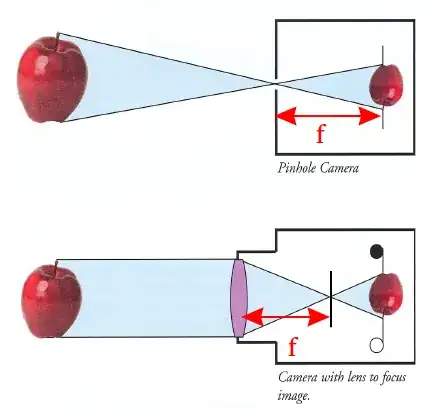Sometimes different but related things have the same name by some tradition or accident, causing a lot of headache to newcomers to a field.
I would like to come to clear terms with this: does the expression 'focal length' mean something distinct when applied to pinhole cameras vs. lens cameras?

With pinhole cameras it's the distance from the pinhole to the image plane. With lenses, it's the distance from the lens to the point where parallel incoming rays meet. Why are these things called the same? Am I right that this is just clumsy nomenclature or are these related at the limit of some infinities?
EDIT: Apparently some other diagrams label the lens-to-image-plane as "focal distance". Is "focal distance" something else than "focal length"? Or are people using inconsistent definitions? Something's fishy here.